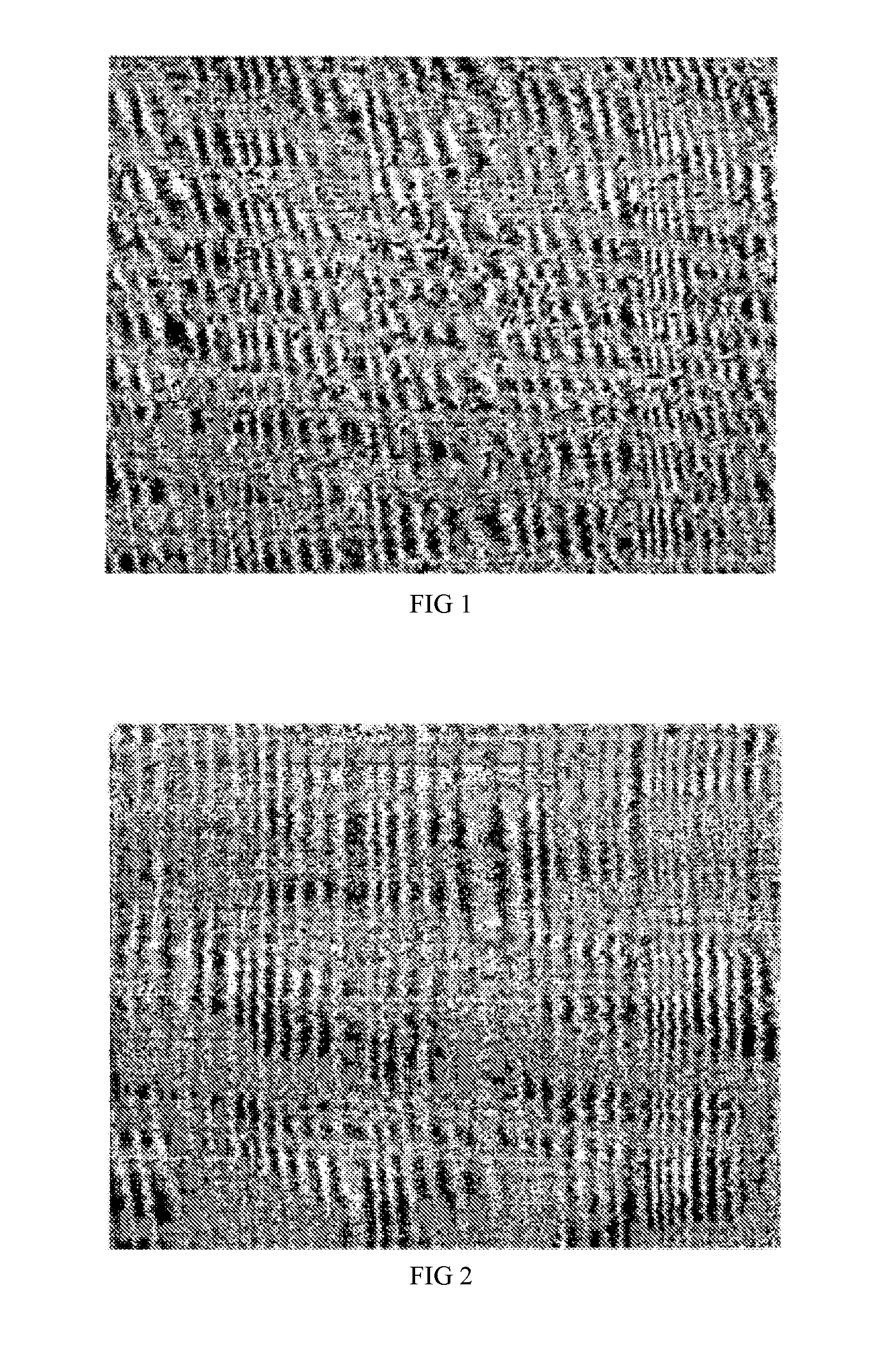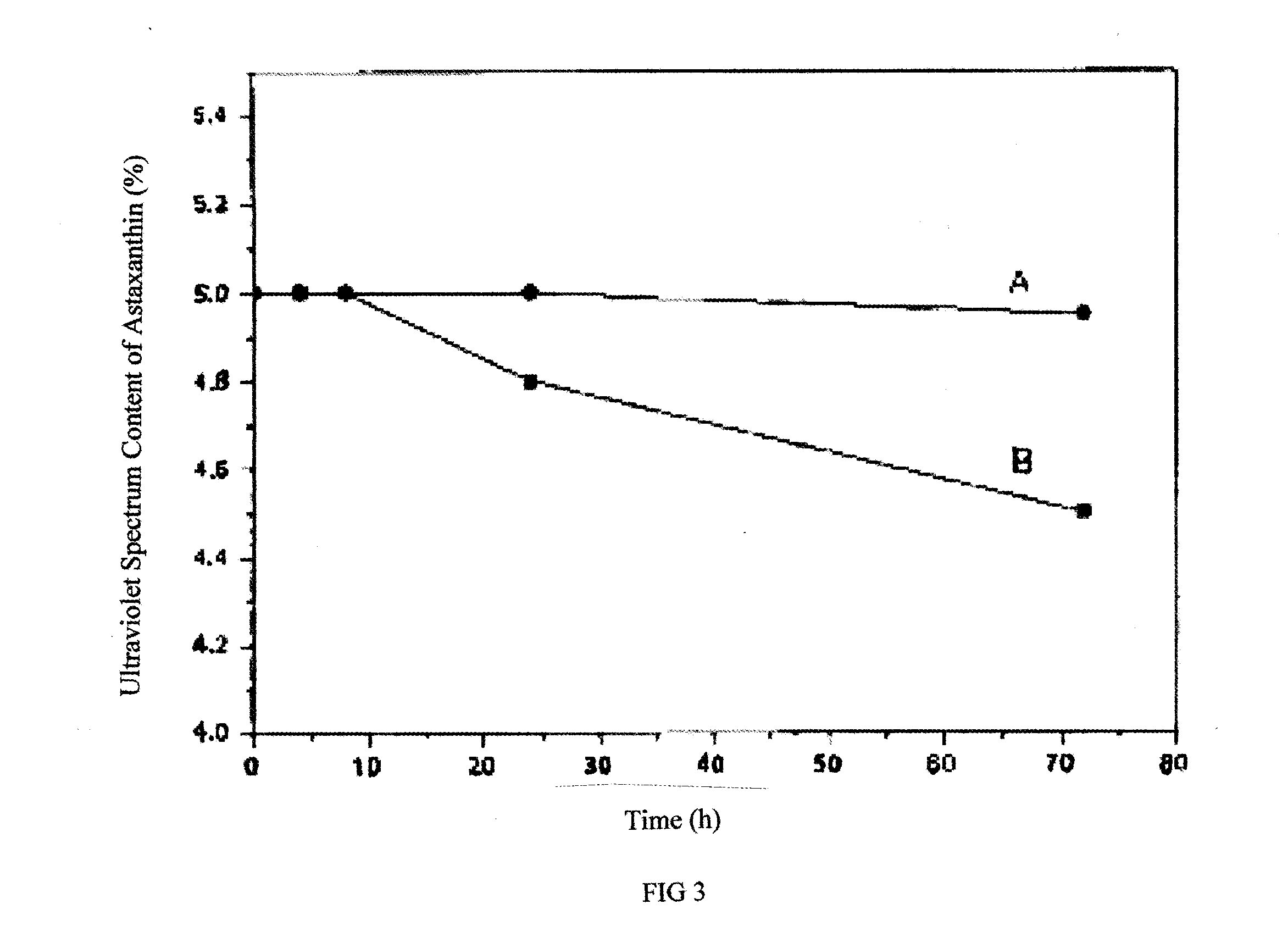Method for preparing oil-dispersible carotenoid preparation
- Summary
- Abstract
- Description
- Claims
- Application Information
AI Technical Summary
Benefits of technology
Problems solved by technology
Method used
Image
Examples
embodiment 1
[0032]20 g astaxanthin coarse crystal was dissolved in 3 L dichloromethane to make astaxanthin solution; the astaxanthin solution was slowly added into a vessel containing 20 L ethanol in spraying form and the spraying speed was adjusted to make the particle size of precipitated amorphous astaxanthin particles less than 2 μm; a 0.3 μm millipore filter was used after spraying, the filter cake was washed with ethanol and pressed to dry to obtain a super refined astaxanthin powder filter cake; such filter cake was mixed with a 1 L water solution which contains 0.1 g vitamin C and 89.4 g gelatin, stirred and pulped, then was put in a high pressure homogenizer for 5 hours when the emulsion desolventized first in vacuum, and then 100 g astaxanthin microcapsule containing 10.5 g astaxanthin can be obtained after spray drying.
[0033]100 g astaxanthin microcapsule was mixed with 100 g soybean oil containing 0.2 g tocopherol and the mixture was grinded in a colloid mill for 3 times in a nitrog...
embodiment 2
[0037]36.5 kg beta-carotene crystal and 260 kg dichloromethane were grinded in a sand mill to obtain a beta-carotene suspension liquid with an average particle size of 3 μm; 1 kg vitamin C sodium and 63.2 kg octenyl succinic starch ester were dissolved in 200 kg water and kept warm at 40° C. for later use.
[0038]The beta-carotene suspension liquid was fed into the bottom of a 4 L, 4-storeyed stirring vessel with height-diameter ratio of 4 via a pulp pump at a flow rate of 8 kg / h, dichloromethane which is preheated to 37° C. by a coiler preheater was fed into the bottom of the stirring vessel at a flow rate of 200 kg / h as well at the same time, the temperature in the vessel was controlled at 38° C. and pressure at 0.25 Mpa, was stay for about 15 minutes and a sample was taken for analysis to know that the dissolution into beta-carotene solution has been completed; the beta-carotene solution and isopropanol (at a flow rate of 1000 kg / h) was led into an over-gravity rotary bed crystalli...
embodiment 3
[0041]50 g canthaxanthin coarse crystal was dissolved in 2 L chloroform to make canthaxanthin solution; the canthaxanthin solution was slowly added into a vessel containing 20 L 95% ethanol in spraying form and the spraying speed was adjusted to make the particle size of precipitated amorphous canthaxanthin particles less than 2 μm; filtered with a 0.3 μm millipore filter after spraying, the filter cake was washed with ethanol and pressed to dry to obtain a super refined canthaxanthin powder filter cake; such filter cake was mixed with 1 L water solution which contains 0.5 g iso-vitamin C and 76.1 g Arabic gum, stirred and pulped, then put it in a high pressure homogenizer for 4 hours when the emulsion desolventized first in vacuum, and then 100 g canthaxanthin microcapsule containing 23.4 g canthaxanthin was obtained after spray drying.
[0042]100 g canthaxanthin microcapsule was mixed with 300 g sunflower seed oil containing 0.4 g BHT and the mixture was grinded in a colloid mill fo...
PUM
| Property | Measurement | Unit |
|---|---|---|
| Temperature | aaaaa | aaaaa |
| Length | aaaaa | aaaaa |
| Fraction | aaaaa | aaaaa |
Abstract
Description
Claims
Application Information
 Login to View More
Login to View More - R&D
- Intellectual Property
- Life Sciences
- Materials
- Tech Scout
- Unparalleled Data Quality
- Higher Quality Content
- 60% Fewer Hallucinations
Browse by: Latest US Patents, China's latest patents, Technical Efficacy Thesaurus, Application Domain, Technology Topic, Popular Technical Reports.
© 2025 PatSnap. All rights reserved.Legal|Privacy policy|Modern Slavery Act Transparency Statement|Sitemap|About US| Contact US: help@patsnap.com


